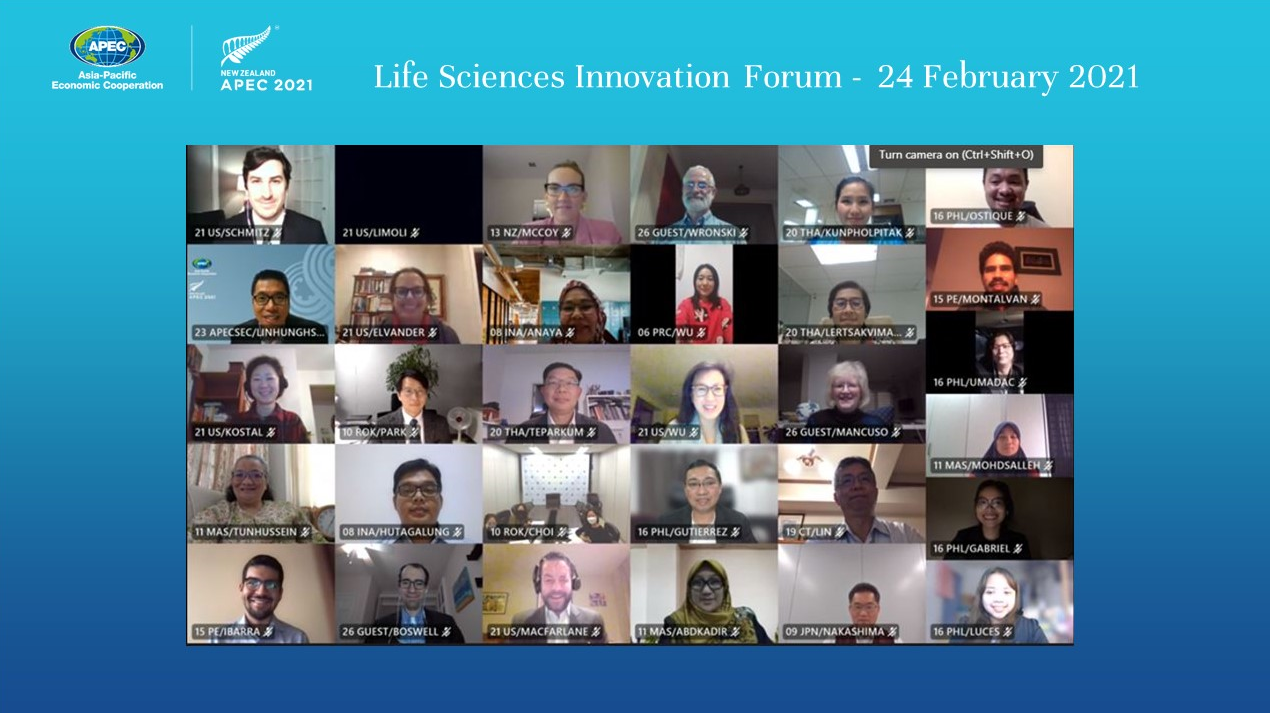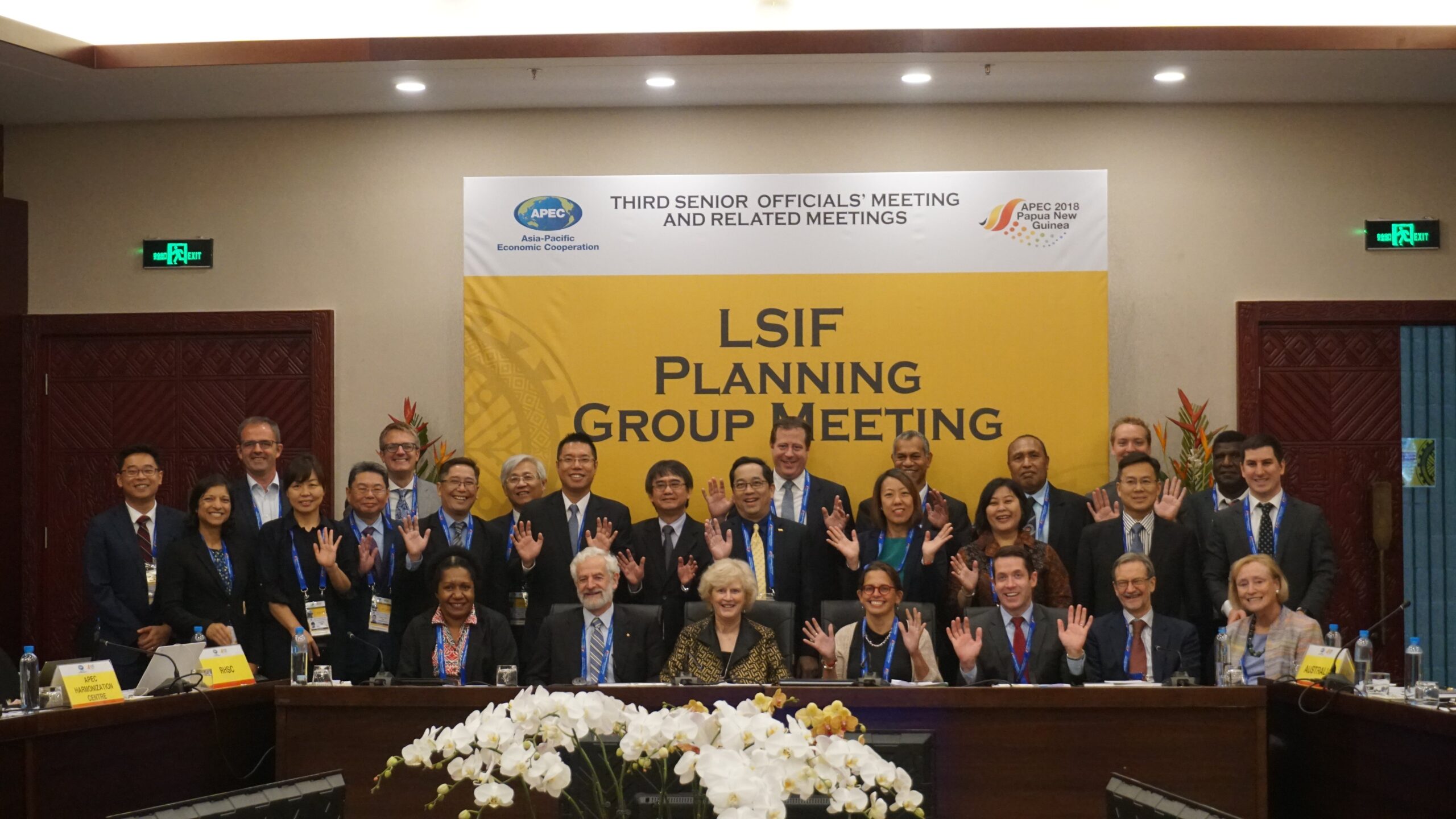The APEC Life Sciences Innovation Forum and Regulations Related to Drug and Vaccine Approvals
Context
Healthcare spending globally is expected to rise at a compounded annual growth rate of 4% from 2020-2024, accompanied by significant changes in care models, technologies, and delivery mechanisms.[1] Shifting demographics such as an aging population, evolving chronic diseases, and systemic shocks like the global COVID-19 pandemic are changing the life sciences market landscape, requiring more investment and support to facilitate an ecosystem for innovation, including a regulatory environment that protects relevant policy objectives while facilitating life sciences growth throughout the APEC region.
In 2002, APEC Leaders established the Life Sciences Innovation Forum (LSIF) to facilitate policy discussions among government, industry, and academia to foster a policy environment conducive to innovation in the life sciences throughout APEC member economies. The main objectives of the LSIF are to support regulatory convergence[2] in line with international standards, facilitate economic and technical cooperation, and facilitate public-private sector collaboration in the life sciences industry.
Under the LSIF, the Regulatory Harmonization and Steering Committee (RHSC) seeks to create space for APEC-wide public and private sector dialogue across industry, academia, and government with a goal of improving regional alignment in economy-level regulations across APEC. The RHSC, chaired by Japan and the United States, encourages economies to adopt existing international standards, guidance, or scientific principles, or otherwise to increasingly align practices and procedures with their trading partners.
The life sciences sector in economies can benefit from a reduction in duplicative or conflicting standards, enabling faster time to more markets for life-saving innovations and increasing patient access to such advances. Further, where economies mutually recognize testing, inspections, and reviews of high-performing regulators across APEC, it can reduce the regulatory burdens on healthcare innovations, decrease the administrative burdens on regulators, and enable the reallocation of public health resources toward more efficient uses.

Photo Credit: APEC Secretariat

Photo Credit: APEC Secretariat
Main Characteristics of the Cooperation
The nature of the regulatory cooperation includes shared learning and capacity building to promote regulatory convergence, reduce redundancies and streamline procedures while maintaining rigorous standards. In 2012 the LSIF established Training Centres of Excellence for Regulatory Science. The 29 Centres of Excellence across 9 member economies – implemented by representatives of academia, regulators, and industry representatives throughout the region – undertake workshops to strengthen capacity among APEC member economies in life sciences regulation and to encourage regional harmonization. The centres focus on medical product regulation, and offer training in key international standards, with the RHSC advising on training objectives and content.
Efforts have focused primarily on:
- encouraging information sharing and confidentiality commitments among regulators, which strengthen partnerships and trust,
- establishing Mutual Recognition Agreements (MRAs) and acceptance of other’s Good Manufacturing Practices (GMP) certificates, and
- streamlining requirements for licensing facilities.
By the Numbers: Good Manufacturing Practises (GMPs) and the Benefits of Mutual Recognition
Regulators must certify that drug manufacturing facilities comply with Good Manufacturing Practices (GMPs). 17 APEC member economies mutually recognize one another’s GMP certificates. Assuming that a facility inspection takes a team of 3 regulators 10 days to fully complete an inspection, a single GMP certificate can save up to 480 labor days and associated travel expenses for regulators.
Further, this decreases the compliance costs and burdens associated with hosting GMP inspection teams from multiple economies, facilitating trade and encouraging more efficient allocation of resources.

Photo Credit: APEC Secretariat
Assessment
From the baseline year of 2008 when the RHSC was first formed, significant achievements have been made toward regional convergence in regulations and standards for life sciences among APEC member economies.
During this period, the number of APEC member economies with established confidentiality commitments[3] jumped from 12 to 15. The number of APEC member economies accepting GMP certificates for drug and vaccine manufacturing increased from 15 to 17 economies. The number of APEC member economies that streamlined certificates for pharmaceutical products increased to 8, while the number of economies allowing for multiple site licenses – rather than individual licenses for each site – saw a substantial increase from 9 to 13 economies.
Progress in each of these areas translates into less time, costs, and complexity in administrative and regulatory compliance while maintaining a high level of integrity in safety and quality protection. These reforms have helped to facilitate trade and enable resources to be used more efficiently by regulators and industry representatives alike.
Current Status
The LSIF has now ceased operations. A decision on the status of RHSC as an APEC forum is pending as at April 2023.
Endnotes
[1] “2021 Global Health Care Outlook,” Deloitte Consulting, available at 2021 Global health care sector outlook | Deloitte
[2] The RHSC defines “Regulatory convergence” as a voluntary process whereby the regulatory requirements across economies become more aligned (or more similar) over time as a result of the gradual adoption of harmonized international guidances and standards, and internationally recognized scientific principles, practices, and procedures. It does not seek to establish new or change existing legal frameworks, laws, or regulations. It does not require regulators to be subject to any outside authority or prevent regulatory authorities from protecting and promoting public health. It does not have a specific endpoint; regulatory convergence is never “complete” or “achieved” as new products as developed, new standards are established, and new regulatory staff begin careers.
[3] Confidentiality commitments establish a formal legal framework for sharing specific kinds of confidential healthcare information with foreign counterpart bodies and international organizations.
Date: This case study was written in 2021 and finalised in 2022.
[3] Confidentiality commitments establish a formal legal framework for sharing specific kinds of confidential healthcare information with foreign counterpart bodies and international organizations.